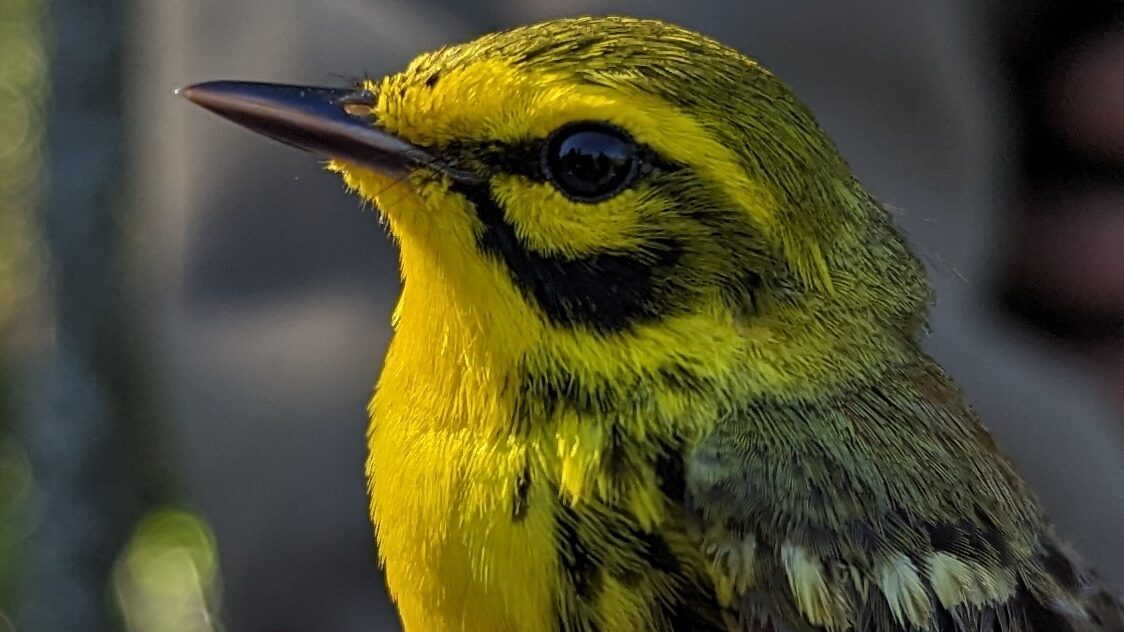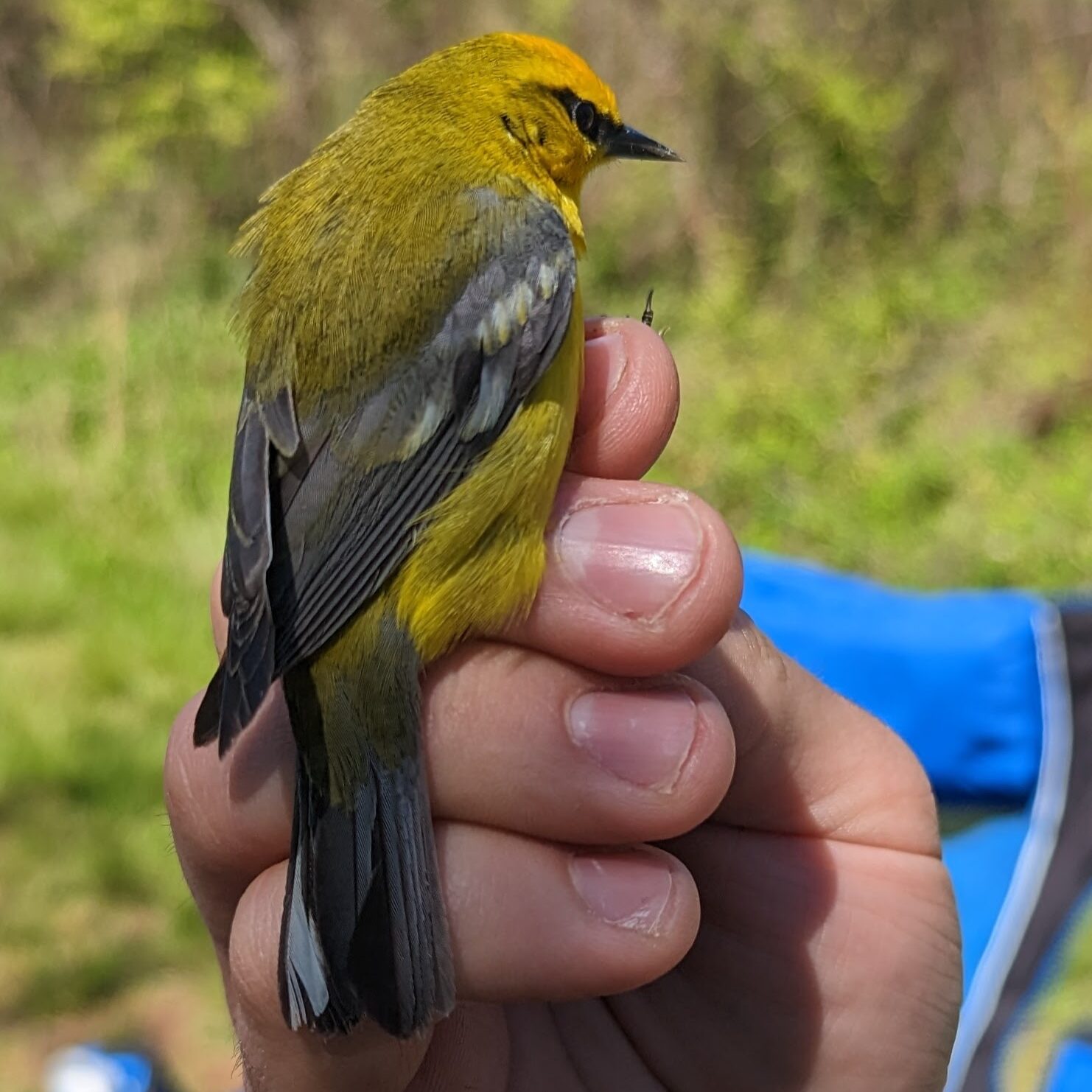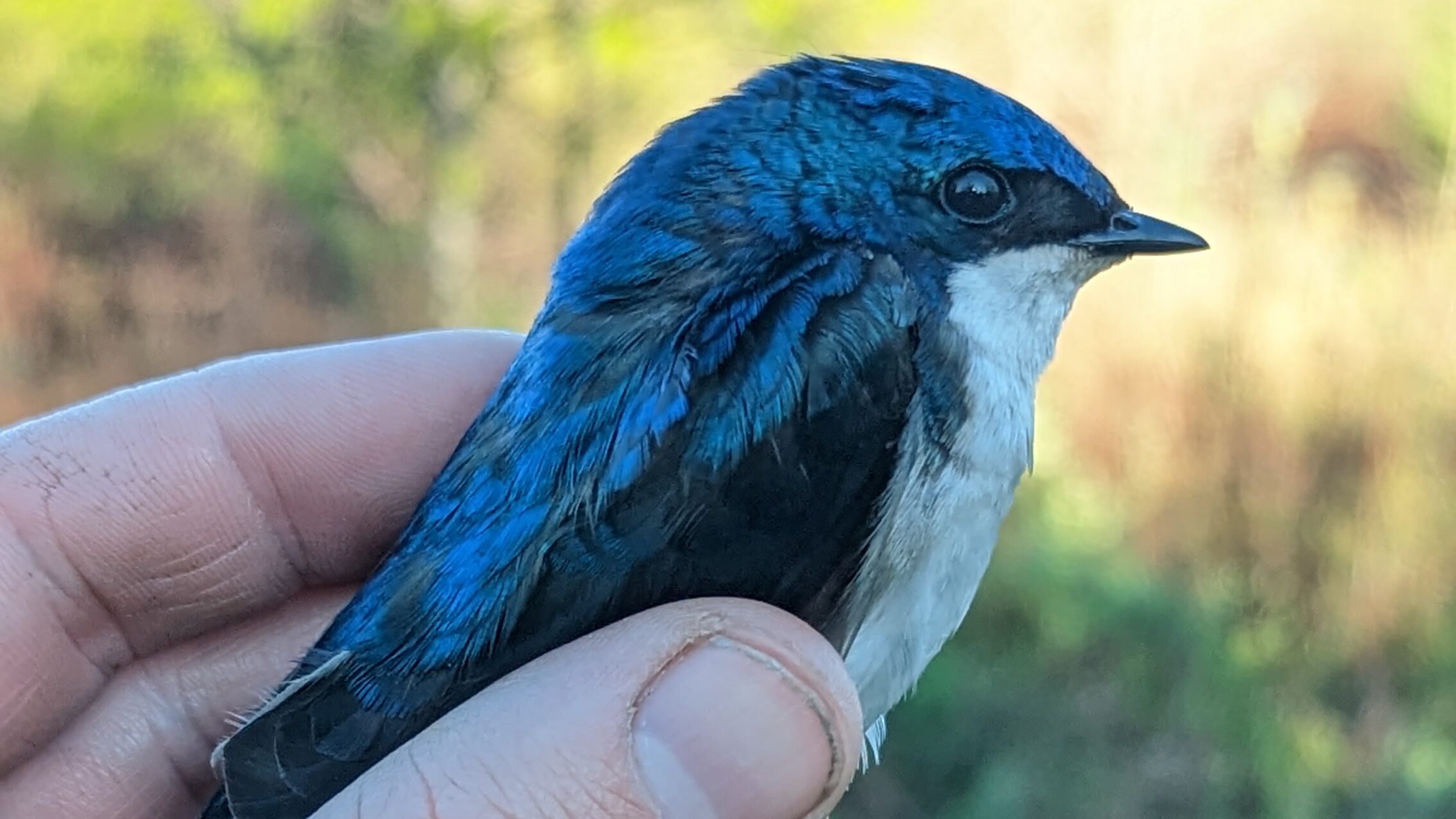Moonlighting
Vol 1. Saturday May 6, 2023

42° / 72° Sunny
I wondered what bird I would hear first. It was somewhere between 4:45 and 4:55am that I was greeted not by bird song, but by something I hadn’t seen in a while. A round beacon in the predawn sky. I really couldn’t remember the last time I saw the moon. It was at least over 2 to 3 weeks before. But this time it showed itself in bright glory directly through my bathroom window.
There it was, as my ears listened, the Wood Thrush was the first bird before first light, its melodic flute-like song. After my eyes adjusted to the large orb in the sky, my ears woke up to the rest of the birds heralding the morning.
I grabbed my coffee and my car keys and headed out the door, exactly the same way the rest of us did on our way to the first Wild Bird Research Group songbird banding session of 2023.
I chased the moon half the way, as it sank into the horizon playing a very good game of hide and seek with me. Every mile I drove, the moon only increased in size moving closer to the horizon. But with the changes in hills and countryside it became ever so much harder to capture. Meanwhile, Sean (our banding station Director) was chasing fox kits off the road. Which he successfully did, and snapped a pic, and posted a story on Instagram too. I could attempt to capture the moon, but my wheels would probably hit a ditch if I tried. So, with the game of hide and seek complete, I turned my attention to the skinny pot-holed driveway more fit for an ATV than an SUV, the entrance to our Fiddler’s Creek station.
A little bit about Fiddler’s Creek Preserve:
Wild Bird Research Group is studying the usage of a restoration shrubland and the bird species that breed there (from approximately late Spring through early Fall), this is in conjunction with @mercercoparks managing the amazing property which is partially fenced to deter deer browse, while hikers are allowed to pass through the gates.
After some introductions and hellos, we got right to work. The light fog across the preserve dwindled, and the sun was beginning to feel warmer than it had all spring. Yet, my toes were still numb in the chilled wet grass from the prior night in the 40s. Then we took a crash course in acronyms and sexing and wing and tail length. We were also handed our homework sheet too. A list of names and acronyms to learn, like a Black-Throated Blue Warbler is noted down in the banding log as BTBW.
Soon though, the fog was no match for the rising sun, and the first bird arrived. Like the homecoming king or queen, the first bird of the season wears an invisible crown of distinction…this time, the honor goes to the American Robin.

The birds were certainly active on this bright blue May morning. So much so that we even had a rare visitor to the station. A Tree Swallow dipped down and paid a visit. Later on, Blue Jay, a Black-billed Cuckoo and a number of American Goldfinches and some sparrows. Then, a bird that should have been in Canada by now, but he was lingering stateside instead, moonlighting as a summer resident. Later, the usual suspects were, as in a few very colorful warblers, a Gray Catbird, but oddly so, a bird that not one of us could guess. Larger in weight than a Catbird, a favorite among birders and non birders alike, was the hint we were given. Yet we were still stumped. The clues were so good, but we still were trying to guess. It was an Eastern Bluebird! (We banders like to play a little game of “guess the bird” with each other by giving birding clues and hints.)
Then the pseudo-initiation portion of the morning began, where all the new intern/volunteer people wanted to see what it was like to be chomped upon by a Northern Cardinal. Oh it hurts…for sure, I mean look at that seed-crushing beak. But the question was, how much does it hurt? Like a child intrigued by running their finger quickly through a burning flame…we all wanted the bright red mohawk-sporting beast to bite us. Just so we were aware of the feeling. Because it will bite, nearly each time. Aggressive little devils. And then the bird, like a trained performer, proceeded to clamp down on about 5 fingers that were placed before it. No blood was drawn. But it was close. Of note, the beak of a Northern Cardinal is strong enough to pry off bands, so they get their own special ones made of stronger metal. Meanwhile at some point during this episode of chompers, Jack was out playing a field game with turkeys we later found out. Well, it was more a game of peek-a-boo than a game actually.
The time went by fast. Measurements like weight (mass), molt limits/age criteria, and band numbers were all carefully, but quickly logged. In some cases, bands already exist on the bird from a prior year. As recordings were being taken, scales were in use, clothespins with numbers on them were everywhere, photos were taken, and a pair of pliers bit the dust. Pencils were sharpened with pocket knives and another successful morning of WBRG was underway and near complete. A checklist was mentally prepared of equipment we were to bring the next morning we met…note: more clipboards, a bike lock, a new set of pliers. In the downtime, we talked about what birders talk about I guess. Zero carbon emission birding by bike that was upcoming in the World Series of Birding, and whether hitting the snooze button upon waking before the sun is done or avoided or somehow an illusion, if you secretly catch another 20 mins of sleep on the couch? Just your everyday banter really.
The sun was still and our banding session coming to an end, we discovered that Jack scared the egg right outta that turkey, as a perfectly laid egg about the size of a squash ball was on the pathway to the cars. None of us stashing an incubator in our pocket though, it was gently placed aside for fox’s dinner. And while some saw a gorgeous rat snake along the meadow’s edge, others were stunned that snakes can move backwards. Hmm. Learn something new every day.

Here are the birds species of this day in no particular order:
- Blue Jay
- Tree Swallow
- House Wren
- Gray Catbird
- Eastern Bluebird
- American Robin
- American Goldfinch
- Field Sparrow
- White-throated Sparrow
- Song Sparrow
- Blue-winged Warbler
- Common Yellowthroat
- Yellow Warbler
- Prairie Warbler
- Northern Cardinal
- Black-Billed Cuckoo

The Wild Bird Research Group, Inc. is a 501 (c)(3) non-profit organization whose mission is to conduct and support research and science-based conservation initiatives that benefit birds and their habitats in the Americas. WBRG and its associates conduct various research, monitoring and education programs in the Mid-Atlantic U.S. and Central America, tropical bird banding internships for university students, owl migration and winter ecology research, and bird-focused environmental interpretive programs.
Birds are also good indicators of environmental health because they are sensitive to habitat change. Changes in bird populations can indicate environmental stressors, such as impacts from extreme weather or human development, which could affect other parts of the ecosystem. For all of these reasons and others, researchers conduct avian conservation science.
The USGS Bird Banding Laboratory, now based at the USGS Patuxent Wildlife Research Center in Laurel, Maryland, was established in 1920 to study and help protect North American birds. The USGS laboratory issues permits for banding in the U.S., distributes aluminum bands—about 1 million a year—to participating scientists in the U.S. and Canada, and is a central repository for banding records in both countries.*
*Excerpt from https://www.usgs.gov/news/featured-story/usgs-celebrates-100-years-bird-banding-lab
